This list is sorted alphabetically by department, author, and title. Click a book’s title to be taken to its publisher’s page.
Department of Chinese Studies
Chinese Language: the Software of Chinese People’s Thinking
Shi Yuzhi
Jiangxi Education Press
The Chinese language crystallizes the wisdom of the Chinese people, reflecting five thousand years of Chinese civilization. Through an examination of the language, this book introduces the characteristic thought processes and cultural achievements of the Chinese people. The Chinese language is the software of Chinese people’s thinking, inextricably linked to how people accept information, think about problems, come to conclusions and decide on actions. Written in an engaging style and replete with interesting examples, this book describes, among other things, the history of the Chinese language, its evolution in different locales, and its vocabulary and grammar. In the process, it reveals how the language influences people’s cognitive processes, explains the aesthetics of the language and the literary forms that result, and discusses the importance of the mother tongue in intellectual development and talent cultivation. All Chinese should have an understanding of their mother tongue which forms the basis for personal cultivation. This book will serve to deepen one’s understanding and command of the Chinese language.
The Education Gap between China and the Western World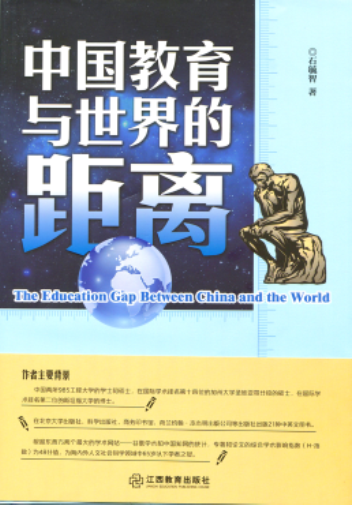
Shi Yuzhi
Jiangxi Education Press
How do we boost one’s creativity? How do we nurture talents who are globally influential? These are two critical challenges faced by China’s education system today. Through comparison with the developed West, this book will seek to highlight the current state of China’s education system and pinpoint the gap and differences between the Chinese way of education and those of western countries that have long been regarded as more educationally advanced and successful. This is in the hope of changing the values, ethos, and mindsets underlying the current Chinese system and reinforcing the need for a reform in order for China to tackle these challenges successfully.
The Semantics of Chinese Music: Analysing selected Chinese musical concepts
Adrian Tien
John Benjamins
Music is a widely enjoyed human experience. It is, therefore, natural that we have wanted to describe, document, analyse and, somehow, grasp it in language. This book surveys a representative selection of musical concepts in Chinese language, i.e. words that describe, or refer to, aspects of Chinese music. Important as these musical concepts are in the language, they have been in wide circulation since ancient times without being subjected to any serious semantic analysis. The current study is the first known attempt at analysing these Chinese musical concepts linguistically, adopting the Natural Semantic Metalanguage (NSM) approach to formulate semantically and cognitively rigorous explications. Readers will be able to better understand not only these musical concepts but also significant aspects of the Chinese culture which many of these musical concepts represent. This volume contributes to the fields of cognitive linguistics, semantics, music, musicology and Chinese studies, offering readers a fresh account of Chinese ways of thinking, not least Chinese ways of viewing or appreciating music. Ultimately, this study represents trailblazing research on the relationship between language, culture and cognition.
Department of Communications and New Media
Neoliberal Health Organizing: Communication, Meaning, and Politics
Mohan J. Dutta
Left Coast Press
Mohan J. Dutta closely interrogates the communicative forms and practices that have been central to the establishment of neoliberal governance. In particular, he examines cultural discourses of health in relationship to the market and the health implications of these cultural discourses. Using examples from around the world, he explores the roles of public-private partnerships, NGOs, militaries, and new technologies in reinforcing the link between market and health. Identifying the taken-for-granted assumptions that constitute the foundations of global neoliberal organizing, he offers an alternative strategy for a grassroots-driven participatory form of global organizing of health. This inventive theoretical volume speaks to those in critical communication, in health research, in social policy, and in contemporary political economy studies.
Department of English Language and Literature
The Language of Organizational Styling
Lionel Wee
Cambridge University Press 
The ways in which commercial organizations and service providers ‘style’ themselves – creating the image they wish to portray to their potential consumers – is a long-established area of research in the fields of sociology and business studies. However language also plays an important role in organizational styling, something which until now has been largely overlooked in the literature. This is the first book-length study of the linguistics of organizational styling, looking at the language and semiotic resources used by holiday resorts, pharmaceutical companies, restaurants and insurance companies in order to project their identities, and style themselves. It discusses in detail a number of case studies and presents an innovative take on the notion of style, as well as bringing together work from linguistics, business studies and sociology.
Department of Geography
Global Production Networks: Theorizing Economic Development in an Interconnected World
Neil Coe and Henry Yeung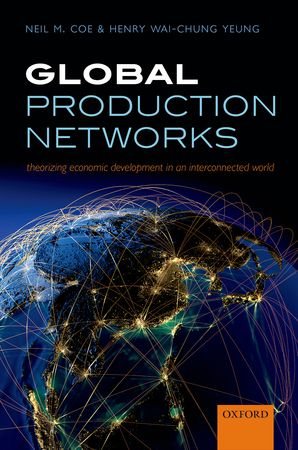
Oxford University Press
Accelerating processes of economic globalization have fundamentally reshaped the organization of the global economy towards much greater integration and functional interdependence through cross-border economic activity. In this interconnected world system, a new form of economic organization has emerged: Global Production Networks (GPNs). This brings together a wide array of economic actors, most notably capitalist firms, state institutions, labour unions, consumers and non-government organizations, in the transnational production of economic value.
National and sub-national economic development in this highly interdependent global economy can no longer be conceived of, and understood within, the distinct territorial boundaries of individual countries and regions. Instead, global production networks are organizational platforms through which actors in these different national or regional economies compete and cooperate for a larger share of the creation, transformation, and capture of value through transnational economic activity. They are also vehicles for transferring the value captured between different places.
This book ultimately aims to develop a theory of global production networks that explains economic development in the interconnected global economy. While primarily theoretical in nature, it is well grounded in cutting-edge empirical work in the parallel and highly impactful strands of social science literature on the changing organization of the global economy relating to global commodity chains (GCC), global value chains (GVC), and global production networks (GPN).
Arts, Culture and the Making of Global Cities: Creating New Urban Landscapes in Asia
Lily Kong, Chia-ho Ching, and Tsu-Lung Chou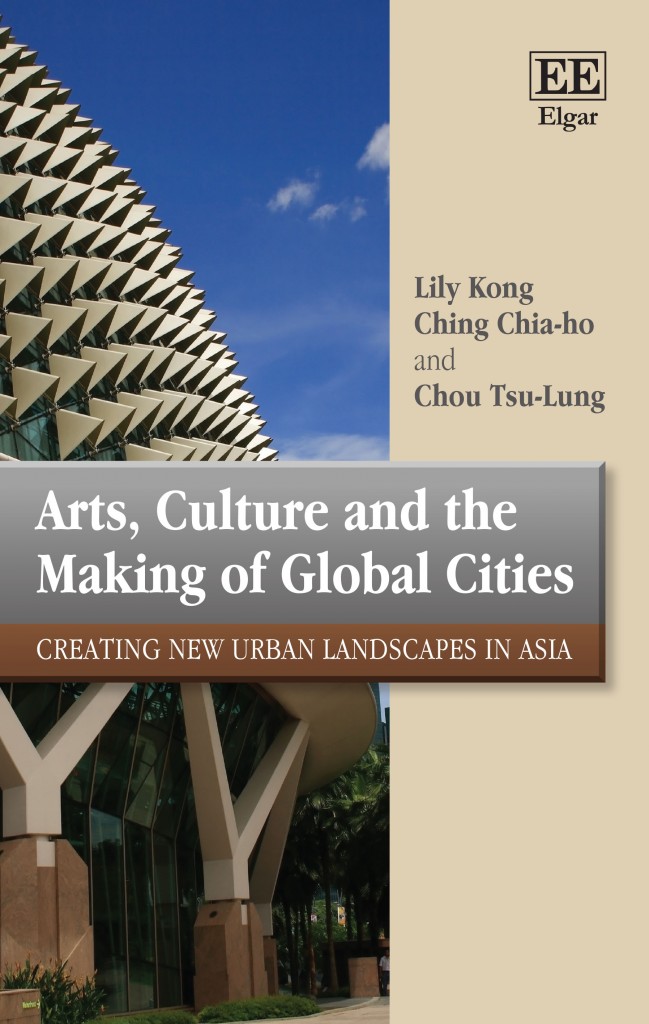
Edward Elgar
While global cities have mostly been characterized as sites of intensive and extensive economic activity, the quest for global city status also increasingly rests on the creative production and consumption of culture and the arts. Arts, Culture and the Making of Global Cities examines such ambitions and projects undertaken in five major cities in Asia: Beijing, Shanghai, Hong Kong, Taipei and Singapore.
Providing a thorough comparison of their urban imaging strategies and attempts to harness arts and culture, as well as more organically evolved arts activities and spaces, this book analyses the relative successes and failures of these cities. Offering rich ethnographic detail drawn from extensive fieldwork, the authors challenge city strategies and existing urban theories about cultural and creative clusters and reveal the many complexities in the art of city-making.
Department of History
Cold War Crucible: The Korean Conflict and the Postwar World
Masuda Hajimu
Harvard University Press
The end of World War II did not mean the arrival of peace. The major powers faced social upheaval at home, while anticolonial wars erupted around the world. American–Soviet relations grew chilly, but the meaning of the rivalry remained disputable. Cold War Crucible reveals the Korean War as the catalyst for a new postwar order. The conflict led people to believe in the Cold War as a dangerous reality, a belief that would define the fears of two generations.
In the international arena, North Korea’s aggression was widely interpreted as the beginning of World War III. At the domestic level, the conflict generated a wartime logic that created dividing lines between “us” and “them,” precipitating waves of social purges to stifle dissent. The United States allowed McCarthyism to take root; Britain launched anti-labor initiatives; Japan conducted its Red Purge; and China cracked down on counterrevolutionaries. These attempts to restore domestic tranquility were not a product of the Cold War, Masuda Hajimu shows, but driving forces in creating a mindset for it. Alarmed by the idea of enemies from within and faced with the notion of a bipolar conflict that could quickly go from chilly to nuclear, ordinary people and policymakers created a fantasy of a Cold War world in which global and domestic order was paramount.
In discovering how policymaking and popular opinion combined to establish and propagate the new postwar reality, Cold War Crucible offers a history that reorients our understanding of what the Cold War really was.
Department of Malay Studies
Radicals: Resistance and Protest in Colonial Malaya
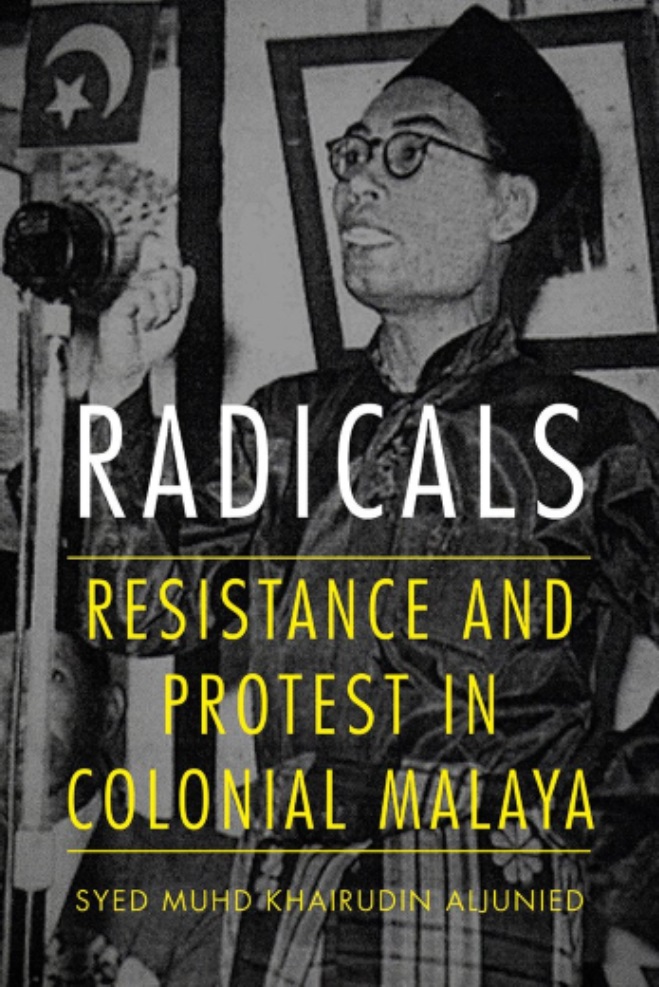 Syed Muhd Khairudin Aljunied
Syed Muhd Khairudin Aljunied
Northern Illinois University Press
Radicals tells the story of a group of radical Malay men and women from ordinary social backgrounds who chose to oppose foreign rule of their homeland, knowing full well that by embarking on this path of resistance, they would risk imprisonment or death. Their ranks included teachers, journalists, intellectuals, housewives, peasants, preachers, and youths. They formed, led, and contributed to the founding of political parties, grassroots organizations, unions, newspapers, periodicals, and schools that spread their ideas across the country in the aftermath of the Great Depression, when colonialism was at its height and evident in all areas of life in their country. But when their efforts to uproot foreign dominance faltered in the face of the sanctions the state imposed upon them, some of these radicals chose to take up arms, while others engaged in aggressive protests and acts of civil disobedience to uphold their rights. While some died fighting and hundreds were incarcerated, many lived to resist colonialism until their country attained its independence in August 1957, all of these Malay radicals were devoted to becoming free men and women and to claiming their right to be treated as equals in a world riddled with prejudice and contradictions.
Syed Muhd Khairudin Aljunied’s innovative study brings to light the less charted and unanalyzed terrain of the radical experience—becoming and being radical. He argues that the experiences and histories of radicals in colonial Malaya can be elucidated in a more nuanced way by interrogating them alongside evolving local and global circumstances and by analyzing them through the lenses of a set of overarching and interconnected mobilizing concepts—a set of ideas, visions, and notions that the radicals used to reason and justify their advent—that were internalized, lived, and utilized in the course of their activism. These mobilizing concepts were their weapons and armor, employed to organize, strategize, protect, and consolidate themselves when menaced by the tentacles of the colonial state as they embarked upon the agonizing path towards independence.
Department of Philosophy
Sensorama: A Phenomenalist Analysis of Spacetime and Its Contents
 Michael Pelczar
Michael Pelczar
Oxford University Press
Michael Pelczar presents an original account of space, time and conscious experience. How does the modern scientific conception of time constrain the project of assigning the mind its proper place in nature? On the scientific conception, it makes no sense to speak of the duration of a pain, or the simultaneity of sensations occurring in different parts of the brain. Such considerations led Henri Poincaré, one of the founders of the modern conception, to conclude that consciousness does not exist in spacetime, but serves as the basic material out of which we must create the physical world. The central claim of Sensorama is that Poincaré was substantially correct. The best way to reconcile the scientific conception of time with the evidence of introspection is through a phenomenalist metaphysic according to which consciousness exists in neither time nor space, but serves as a basis for the logical construction of spacetime and its contents.
Department of Political Science
Indonesia’s Changing Political Economy: Governing the Roads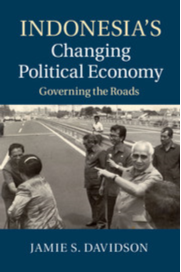
Jamie S. Davidson
Cambridge University Press
Indonesia is Southeast Asia’s largest economy and freest democracy yet vested interests and local politics serve as formidable obstacles to infrastructure reform. In this critical analysis of the politics inhibiting infrastructure investment, Jamie S. Davidson utilizes evidence from his research, press reports and rarely used consultancy studies to challenge mainstream explanations for low investment rates and the sluggish adoption of liberalizing reforms. He argues that obstacles have less to do with weak formal institutions and low fiscal capacities of the state than with entrenched, rent-seeking interests, misaligned central-local government relations, and state-society struggles over land. Using a political-sociological approach, Davidson demonstrates that ‘getting the politics right’ matters as much as getting the prices right or putting the proper institutional safeguards in place for infrastructure development. This innovative account and its conclusions will be of interest to students and scholars of Southeast Asia and policymakers of infrastructure investment and economic growth.
Quest for Political Power: Communist Subversion and Militancy in Singapore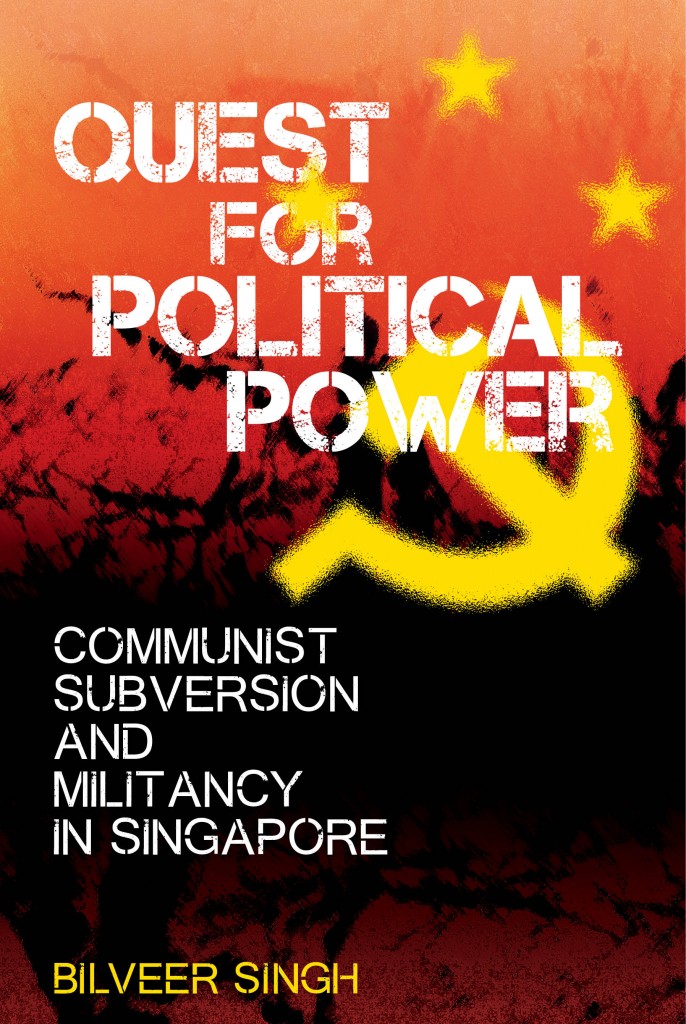
Bilveer Singh
Marshall Cavendish
The history of communism in Malaya (including Singapore) almost coincided with the rise and fall of communism worldwide, best epitomized in Europe by the fall of the Berlin Wall in 1989. Operating through the Malayan Communist Party, communism posed an existential threat to Malaya. While the communist threat in peninsular Malaya was manifested dramatically in armed struggle with guerrillas in the jungle, in Singapore it was primarily in the form of united front subversive activities, interspersed with episodes of violence and assassinations. This new book examines the MCP’s quest for political power in Singapore in the midst of a raging Cold War between communism and the free world, with particular focus on events in the 1950s and 1960s. From its close collaboration with the two leading communist great powers (USSR and China) to its united front strategy of infiltrating student, trade union and political organizations, the MCP’s activities are related here in a clear and engaging manner.
Department of Psychology
Meta-Analysis: A Structural Equation Modeling Approach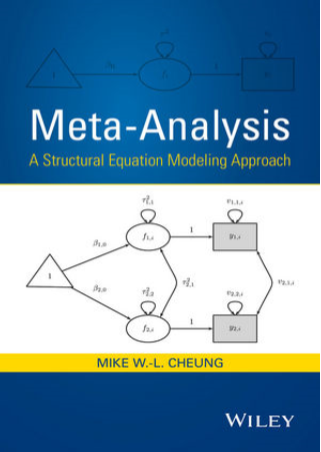
Mike W.-L. Cheung
Wiley
Structural equation modeling (SEM) and meta-analysis are two powerful statistical methods in the educational, social, behavioral, and medical sciences. They are often treated as two unrelated topics in the literature. This book presents a unified framework on analyzing meta-analytic data within the SEM framework, and illustrates how to conduct meta-analysis using the metaSEM package in the R statistical environment.
Meta-Analysis: A Structural Equation Modeling Approach begins by introducing the importance of SEM and meta-analysis in answering research questions. Key ideas in meta-analysis and SEM are briefly reviewed, and various meta-analytic models are then introduced and linked to the SEM framework. Fixed-, random-, and mixed-effects models in univariate and multivariate meta-analyses, three-level meta-analysis, and meta-analytic structural equation modeling, are introduced. Advanced topics, such as using restricted maximum likelihood estimation method and handling missing covariates, are also covered. Readers will learn a single framework to apply both meta-analysis and SEM. Examples in R and in Mplus are included.
This book will be a valuable resource for statistical and academic researchers and graduate students carrying out meta-analyses, and will also be useful to researchers and statisticians using SEM in biostatistics. Basic knowledge of either SEM or meta-analysis will be helpful in understanding the materials in this book.


You must be logged in to post a comment.